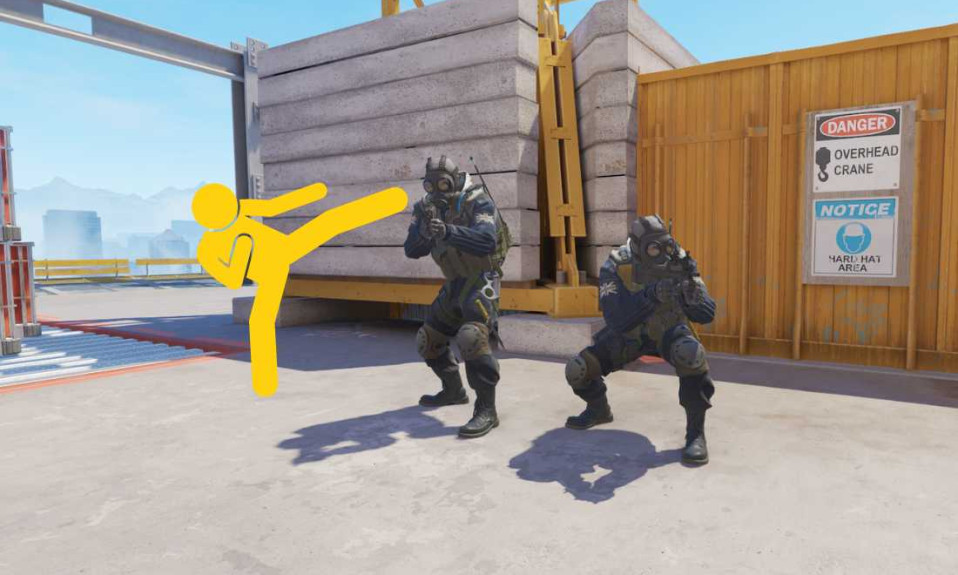Discover insights into the ESL CS2 World Ranking, the top teams’ performance, and the impact of rankings on tournaments. Learn how regional performance and upcoming matches influence the competitive landscape.
The ESL CS2 World Ranking is the ultimate benchmark for competitive Counter-Strike 2 teams across the globe. It provides an in-depth analysis of team performances, rankings, and trends in the esports scene. By combining factors such as tournament results, team consistency, and regional achievements, the rankings offer fans and analysts a comprehensive view of the current competitive landscape. Staying updated on these rankings is crucial for understanding how teams stack up and how tournament seedings are determined. If you’re passionate about esports, diving into the ESL CS2 World Ranking is essential to keep up with the action.
Understanding ESL CS2 World Ranking

The ESL CS 2 World Ranking serves as a trusted metric to evaluate competitive Counter-Strike 2 (CS2) teams globally. It is designed to reflect team performance based on recent achievements, consistency, and strength of schedule. By analyzing these variables, fans and professionals can get a clearer picture of each team’s standing in the CS2 esports scene.
Here’s what the ESL CS 2 World Ranking typically considers:
- Tournament results: Teams earn points based on placements in ESL and other partnered events.
- Opponent strength: Winning against top-tier teams results in higher rankings.
- Roster stability: Frequent roster changes can negatively affect rankings as team synergy is crucial.
This ranking system not only helps fans stay informed but also provides teams with an incentive to consistently perform at their best. It’s updated regularly to ensure accuracy, tracking both rising stars and seasoned favorites. Ultimately, the ESL CS2 World Ranking plays a pivotal role in shaping the competitive landscape of CS2 and determining which teams dominate the global stage.
Key Factors Influencing Team Rankings
The ESL CS2 World Ranking is shaped by several factors that determine a team’s position on the global leaderboard. These factors ensure a fair assessment of performance and allow fans to track the competitive landscape accurately.
Key factors influencing the ESL CS2 World Ranking include:
- Tournament Performance: Teams earn points based on their placements in ESL-sanctioned tournaments. Higher finishes lead to greater rankings impact.
- Opponent Strength: Victories against higher-ranked teams contribute more ranking points compared to wins against lower-tier teams.
- Consistency: A team’s ability to maintain consistent results across tournaments is critical for stable rankings.
- Roster Stability: Frequent roster changes often result in deductions, as team chemistry plays a significant role in sustained success.
- Regional Competition: The strength of a team’s regional opponents directly affects its ranking, with competitive regions offering more opportunities to earn ranking points.
By considering these aspects, the ESL CS 2 World Ranking provides an accurate reflection of a team’s overall competitive standing, holding them accountable for both their victories and challenges.
Top Teams in the Current ESL CS2 Standings
The ESL CS 2 World Ranking consistently highlights the most elite teams in the competitive Counter-Strike scene. As of the latest update, several teams continue to dominate the rankings with their exceptional performances.
Here are the standout teams currently leading the ESL CS2 standings:
- Team X: Known for their strategic gameplay and consistent results, they maintain a solid position at the top.
- Team Y: A strong contender with impressive individual player performances, climbing steadily in the rankings.
- Team Z: Famous for their aggressive tactics, they’ve made remarkable progress in recent tournaments.
What sets these teams apart:
- Consistency: Regular high finishes in premier events.
- Player Synergy: Well-coordinated team dynamics enhance their strategies.
- Adaptability: The ability to adjust tactics against different opponents.
It’s worth noting that even small shifts in performance can significantly alter positions in the ESL CS2 World Ranking. With every match shaping the standings, fans can expect fierce competition as teams battle for dominance. Stay tuned for the inevitable surprises and underdog stories in upcoming tournaments!
How Rankings Impact Tournament Seeding
The ESL CS2 World Ranking plays a pivotal role in determining tournament seeding, ensuring fair and competitive match-ups in esports events. Here’s how rankings influence the seeding process:
- Balanced Matchups: Teams with higher rankings are typically seeded against lower-ranked teams in the initial stages. This reduces the likelihood of top teams eliminating each other early in the tournament.
- Fair Play Structure: Accurate rankings allow organizers to create a structure where every team has a realistic path to success, rewarding top performers while keeping competition open.
- Audience Experience: Proper seeding, based on the ESL CS2 World Ranking, ensures engaging matches throughout the event. Fans are more likely to witness high-stakes battles during later stages when the top teams face off.
For example, a #1 ranked team may face a #16 ranked team in the first round, offering a balanced and systematic approach. This ranking-guided seeding system maintains the integrity of the competition and keeps both players and audiences invested until the final match. Understanding this dynamic highlights the importance of up-to-date ESL CS2 rankings in shaping tournament outcomes.
The Role of Regional Performance in Rankings
When it comes to the ESL CS 2 World Ranking, regional performance plays a crucial part in determining a team’s position. Teams from various regions, such as Europe, North America, and Asia, compete not only locally but also on the global stage. Here are some key ways regional performance contributes to the rankings:
- Regional Tournaments: Success in regional events often serves as a foundation for global ranking points. For example, teams excelling in European leagues are likely to earn more recognition due to higher competition levels.
- Level of Competition: The strength of opposing teams within a region can significantly impact ranking weights. Dominating a weaker region may not boost the rankings as much as competing in a stronger one.
- Global Crossovers: How teams perform when stepping out of their regions into international tournaments is a decisive factor.
Additionally, the balance between regional consistency and global adaptability ensures the ESL CS2 World Ranking reflects a fair assessment of both regional and international prowess. As a result, players and fans alike can rely on these rankings for a well-rounded perspective of team performance.
Upcoming Matches to Watch in ESL CS2
Upcoming matches are pivotal for determining shifts in the ESL CS 2 World Ranking as teams battle to secure their positions. These high-stakes games offer fans a glimpse into evolving team strategies and performances, making them must-watch events.
Here are some key matches to keep an eye on:
- Team A vs. Team B: A clash between two top-ranked teams that could shuffle the leaderboard.
- Dark Horse vs. Fan Favorite: An underdog facing off with a powerhouse, promising dramatic moments.
- Regional Derby: Teams from the same region competing for points and heightened regional pride.
Critical details to monitor:
- Map Pool: Teams’ proficiency on different maps often shapes match outcomes.
- Player Form: Individual player performance might tip the scale in these games.
- Historical Rivalries: Intensity rises when teams with competitive history face each other.
These matches are not just about gaining ranking points; they reflect the evolving dynamics within the competitive scene, directly influencing the ESL CS2 World Ranking. Mature strategies, unexpected plays, and nail-biting finishes keep the excitement alive for esports enthusiasts worldwide.
How to Follow the Latest ESL CS2 Rankings
Staying updated with the ESL CS 2 World Ranking is essential for fans who want to track team progress or analyze match outcomes. Fortunately, there are several ways to keep up with the latest rankings without missing a beat.
Here are some effective methods to follow the rankings:
- Official ESL Platforms: The most reliable place to find updated rankings is through ESL’s official website or their social media channels.
- Live Streams and Broadcasts: Many tournaments and matches feature live commentary discussing the ESL CS2 World Ranking and its potential shifts.
- Community Forums: Online platforms like Reddit and fan groups frequently share updates and analyses of ranking changes.
- Dedicated eSports News Sites: Websites that specialize in eSports content provide comprehensive updates, often accompanied by expert insights.
- Mobile Apps: ESL-supported applications or third-party apps notify you in real time about any updates in team standings.
By regularly checking these resources, you can ensure you’re always informed about the latest developments in the ESL CS2 World Ranking, fostering a deeper connection to the competitive scene.
Frequently Asked Questions
What is the ESL CS2 World Ranking about?
The ESL CS2 World Ranking is a global leaderboard that ranks the best Counter-Strike 2 teams based on their performances in various tournaments and competitions organized by ESL and other affiliated organizations.
How are teams ranked in the ESL CS2 World Ranking?
Teams are ranked in the ESL CS 2 World Ranking based on their achievements in tournaments, consistency, roster strength, and overall performance in competitive matches. Points are assigned based on the importance and prestige of the tournaments they participate in.
Why is the ESL CS2 World Ranking important?
The ESL CS2 World Ranking is important because it provides a benchmark to evaluate the top-performing teams globally. It helps fans follow their favorite teams and also plays a role in seeding for some tournaments.
How often is the ESL CS2 World Ranking updated?
The ESL CS2 World Ranking is updated periodically, typically after major tournaments or crucial events that significantly impact team standings. Regular updates ensure the rankings reflect current performances.









